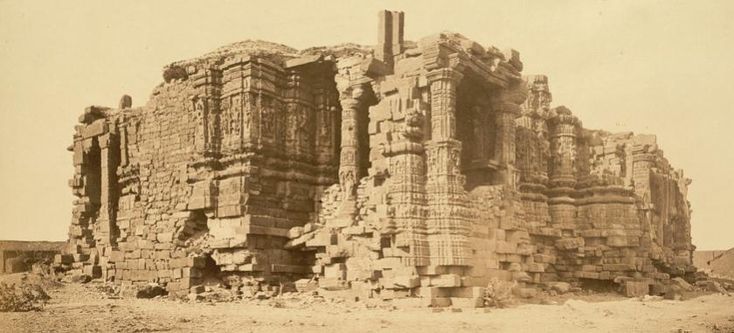Mahmud Gazni- Ruthless Invader
Mahmud of Ghazni launched 17 invasions of India between 1000 and 1027 CE, targeting Hindu kingdoms for wealth and religious conversion. His campaigns were marked by extreme violence, with systematic massacres, forced conversions, and temple destructions.
HISTORY
1/31/20253 min read


Mahmud of Ghazni: The Ruthless Invader Who Persecuted Hindus to Establish Islamic Rule
Mahmud of Ghazni, one of the most infamous Islamic invaders of India, is often glorified in history books as a great ruler and military strategist. However, the real story of his invasions tells a different tale—one of large-scale killings, mass persecution of Hindus, and the destruction of temples to impose Islamic rule. Despite this, Indian history textbooks fail to highlight the brutal reality of his conquests, presenting a distorted narrative that downplays his atrocities.
Mahmud of Ghazni's Invasions and Massacres
Mahmud of Ghazni launched 17 invasions of India between 1000 and 1027 CE, targeting Hindu kingdoms for wealth and religious conversion. His campaigns were marked by extreme violence, with systematic massacres, forced conversions, and temple destructions.
1. The Massacre at Thanesar (1014 CE)
Event: Mahmud invaded the holy city of Thanesar (present-day Haryana), which was a major Hindu pilgrimage site.
Atrocities: Thousands of Hindus were slaughtered, and temples were plundered.
Aftermath: The idol of Chakraswamin temple was broken and sent to Ghazni as a symbol of Islamic supremacy.
2. The Destruction of Mathura (1018 CE)
Event: Mahmud attacked Mathura, the sacred birthplace of Lord Krishna.
Atrocities: Over 50,000 Hindus were killed. Hindu women and children were enslaved. The grand temples of Mathura, including the Keshavadeva Temple, were looted and burned.
Loot: Mahmud carried away gold and silver worth millions, further funding his future invasions.
3. The Kalinga Massacre (1022 CE)
Event: During his campaign against the Kalinga region, Mahmud’s army burned down cities and slaughtered civilians.
Casualties: Over 100,000 Hindus were reportedly killed in a single campaign.
Religious Destruction: Temples were razed to the ground, and mosques were built over them.
4. The Brutal Invasion of Somnath (1025 CE)
Event: Mahmud’s most infamous invasion was against the Somnath temple, one of the holiest shrines of Shaivism in Gujarat.
Atrocities: Over 50,000 Hindu devotees were killed inside the temple premises. The temple’s Shivling was broken, and its pieces were sent to Ghazni and placed on the steps of the Jama Masjid. Hindu priests were massacred, and those who resisted were either killed or forcibly converted.
Loot: Mahmud carried away treasures worth 20 million dinars (around $1 billion today).
Mahmud’s Islamic Rule: Forced Conversions & Persecution
Mahmud was not just a looter but an ideological warrior of Islam. His invasions had a clear religious motive—to establish Islamic dominance and weaken Hindu resistance.
Hindu Slavery: After every invasion, thousands of Hindu men, women, and children were taken as slaves and sent to Ghazni. Many were sold in Central Asian markets.
Destruction of Temples: Over 1,000 Hindu temples were destroyed during his reign.
Forced Conversions: Hindus were given two choices—convert to Islam or face death.
Mughal Invaders and the Destruction of Indian Culture
Mahmud’s invasions set a precedent for later Islamic rulers like Muhammad Ghori, Alauddin Khilji, and Aurangzeb, who continued the destruction of Hindu culture.
Mughals like Babur, Akbar, and Aurangzeb followed Mahmud’s footsteps, attacking Hindu temples, imposing Jizya (tax on non-Muslims), and converting people through force.
Destruction of Universities: Nalanda and Vikramshila, India’s greatest centers of learning, were burned down by Islamic invaders, leading to a massive loss of Hindu knowledge and heritage.
Imposition of Islamic Laws: Hindus were forced to follow Sharia law, restricting their religious and social freedom.
How Indian History Textbooks Whitewash Mahmud’s Crimes
Despite overwhelming historical evidence, Indian school textbooks fail to highlight Mahmud’s atrocities and instead portray him as a brilliant military leader.
Distorted Narratives in Textbooks
1. Glorification of Mahmud: Textbooks describe him as a "great patron of art and architecture", ignoring his mass killings and religious fanaticism.
2. Downplaying Hindu Massacres: The large-scale slaughter of Hindus is rarely mentioned, creating a false image of religious tolerance.
3. No Mention of Forced Conversions: The textbooks conveniently omit details of forced conversions and slavery, misleading students about the true nature of Islamic invasions.
Why This Historical Distortion?
Political Ideology: Leftist historians and secularist agendas have rewritten history to suppress Hindu suffering and promote Islamic invaders as benevolent rulers.
Appeasement Politics: In modern India, political parties avoid criticizing Islamic rulers to maintain their vote banks.
Western Influence: Colonial-era historians like William Dalrymple and Romila Thapar have further distorted Indian history, presenting invaders as "reformers" rather than "destroyers".
Conclusion: The Need to Reclaim True Indian History
The truth about Mahmud of Ghazni and other Islamic invaders must be brought to light. Hindus suffered immensely under these brutal conquests, and their pain cannot be ignored in the name of "secularism" or "political correctness."
What Needs to Be Done?
Revise History Textbooks to include the true horrors of Islamic invasions.
Promote Indic Narratives through books, blogs, and documentaries.
Educate Future Generations about the sacrifices made by Hindu warriors and kings like Prithviraj Chauhan, Maharana Pratap, and Chhatrapati Shivaji, who resisted Islamic oppression.
The world must recognize Mahmud of Ghazni for what he truly was—a mass murderer, a religious extremist, and a destroyer of Indian civilization. It is time for Hindus to reclaim their history and ensure that the sacrifices of their ancestors are never forgotten.